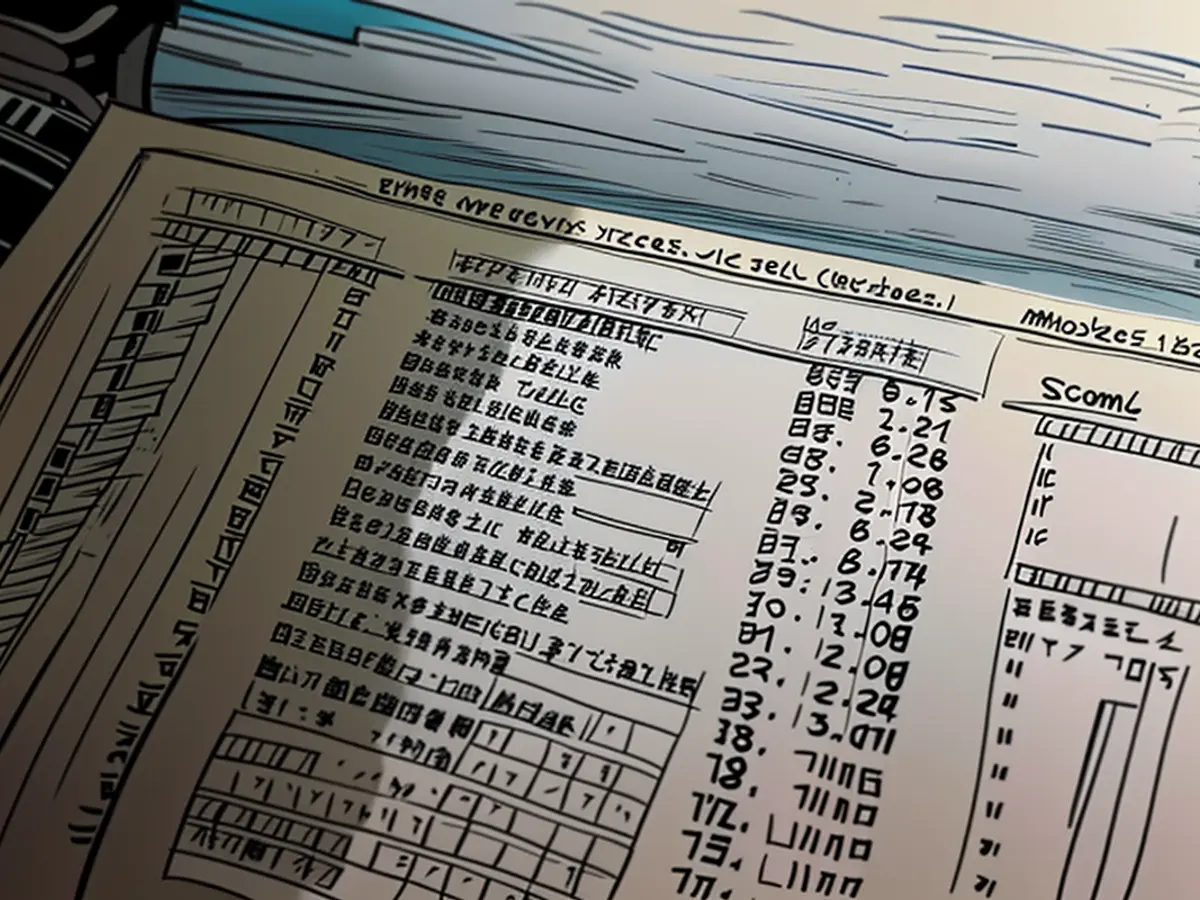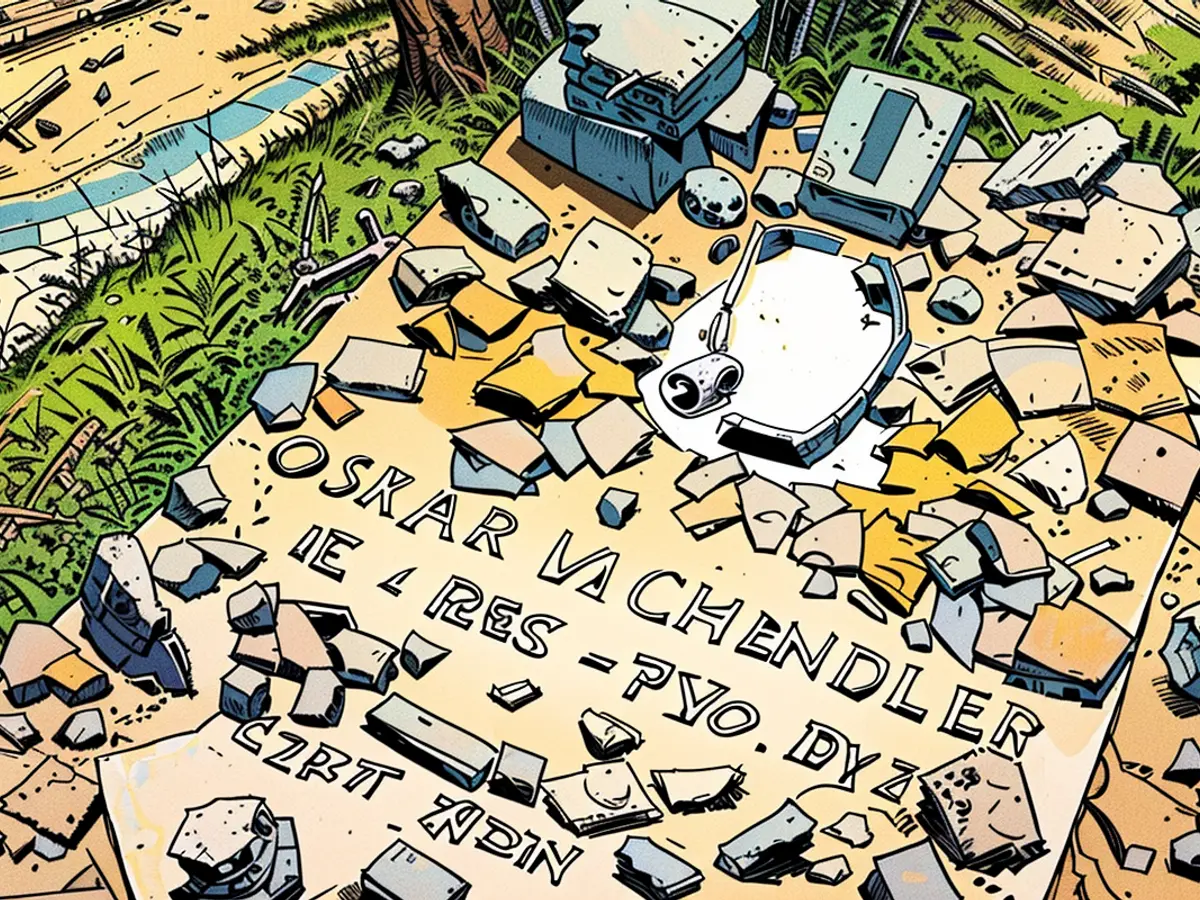Commemorating the 50th anniversary of the demise of the contentious figurehead, Oskar Schindler
Factory proprietor Oscar Schindler was initially a supporter of Nazi ideology. However, during the Nazi era, he saved hundreds of Jews. The German Federal Archives now maintains his property, which was discovered in Hildesheim.
There are over a thousand names listed on the 19 carefully typed pages. These are over a thousand Jews who managed to evade the Nazi's extermination machinery during World War II because Oscar Schindler deemed them necessary for his factory and thus protected them.
"Schindler's List" gained worldwide recognition in 1993 through the film of the same name directed by American director Steven Spielberg. However, Schindler's story as a Sudeten German factory owner was not yet fully told. In 1999, a trunk containing 7000 documents from Schindler's estate was found in Hildesheim, including a version of the famous list. To commemorate Schindler's 50th anniversary, the German Federal Archives presents a portion of this find and Schindler's story as a paradoxical hero on their website.
Pots for the German Army
According to this, the then 31-year-old Nazi supporter Schindler moved to occupied Poland in 1939 in search of profit. Near Krakow, he rented a factory and produced enameled pots, plates, and bowls for the German Army. He employed cheap labor from the local disenfranchised Polish Jews.
Schindler's and his wife Emilie's support for the Jewish workers began as the pressure to exterminate the Jews increased. Initially, Schindler built housing at his "German Enamelware Factory" so that people would not be transported to a labor camp. Eventually, he employed more and more Jews, claiming they were essential for the war effort.
At times, Schindler even created fake professions for them to keep the employees. "Without Schindler's intervention, all of these people would have been killed," said head of the department Tobias Herrmann from the German Federal Archives.
Hundreds of names on the list
When Schindler moved his factory to the Sudetenland at the end of the war due to the advance of the Soviet army, he took his "Schindler Jews" with him - after much negotiation with the Nazi authorities, who were increasingly targeting him themselves. 800 men and 300 women were on his lists. In 1945, Oscar and Emilie Schindler also took in the so-called Golleschauer Jews, a group of Jewish forced laborers from an external camp of the Auschwitz extermination camp, who were aimlessly transported in cattle wagons.
After the German surrender, the Schindlers fled to southern Germany. They lost their property. Economically, Oscar Schindler never had great success again. He received financial support from Jewish organizations and some rescued former employees. In 1962, he was awarded the title "Righteous Among the Nations" in Israel. His wife Emilie, with whom he separated after the war, received this title in 1994. Some children's drawings from Israel were also found in the trunk with his estate. Among them is a heart with an inscription in beautiful handwriting: "To Mr. Schindler, with love Debbie."
"He was no intellectual"
The biographer Michel Friedman, whose parents were rescued "Schindler Jews," knew Schindler in his childhood in Frankfurt am Main. "I encountered a German who was surprisingly and convincingly simple," Friedman once said. "He was no intellectual, no educated man, He was no man who had studied anything."
Schindler was "morally not particularly highly regarded," a "womanizer, he had many, many women." Yet, unlike all "moralists," Schindler helped people at the risk of his own life. Thus, he showed that this was also possible under the Nazi regime, said Friedman. "And I was clear that this man, who then was at our home, was the basis for us even living at home, for us even living. That I would not have been born as a child if my parents had not been rescued by him."
How did the suitcase with Schindler's estate end up in the attic in Hildesheim? That's where Schindler had a room in the house of a friend. Her son found the documents 25 years after Schindler's death. He died on October 9, 1974. The German Federal Archives secured the documents on microfilm and passed them on to the Holocaust Memorial Yad Vashem in Jerusalem. From there, the German Federal Archives received an original carbon copy of "Schindler's List," which is now stored in Koblenz.
Despite being initially a supporter of Nazi ideology, Oscar Schindler's actions dramatically shifted during the Nazi era. Unlike many Neonazis, Schindler saved hundreds of Jews, viewing them as essential for his factory and thus protecting them from the extermination machinery.
The narratives of these Jews, now listed on the famous list discovered after Schindler's death, serve as poignant testaments to his heroism, contrasting with the often brutal actions of the Neonazis.








